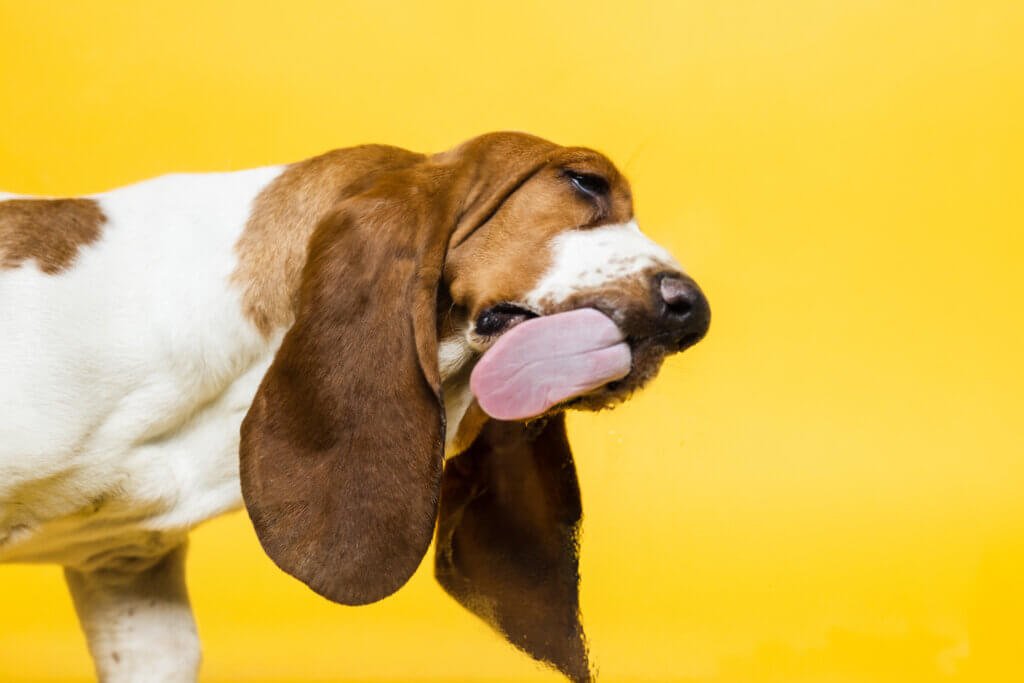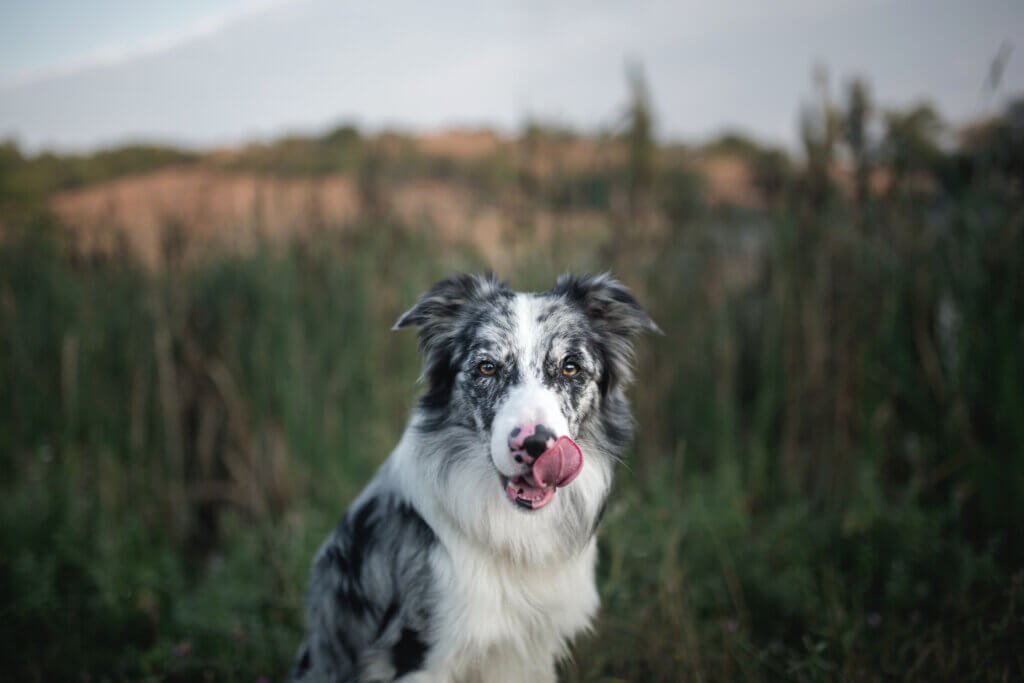Introduction
Dogs, our beloved companions, exhibit a diverse range of behaviors that often leave us both fascinated and puzzled. Among these behaviors is the mysterious act of air-licking, something you’ve likely observed your furry friend doing. In this comprehensive exploration, we aim to uncover the underlying reasons behind why dogs engage in air-licking, shedding light on the intricacies of canine behavior, physiology, and psychology. By the end of this in-depth analysis, you will have gained a profound understanding of this enigmatic canine quirk.

The Sensory World of Dogs
To begin our journey into understanding why dogs lick the air, we must first delve into the sensory world of our canine companions. Dogs possess an olfactory system far superior to that of humans. Their ability to detect scents at incredibly low concentrations and perceive odors beyond our human capability plays a pivotal role in decoding the mystery of air-licking. We’ll explore the theory that air-licking may serve as a means for dogs to sample and process scent molecules in their environment, giving them crucial insights into their surroundings.
The Communication Factor
Dogs are inherently social animals and communicate through a variety of means. This includes body language, vocalizations, and the intriguing act of air-licking. It’s important to recognize that dogs have evolved with a unique set of behaviors to convey their emotions and intentions. We’ll delve deeper into the concept that air-licking might function as a form of non-verbal communication. It could be a sign of submission, a mechanism for diffusing tension, or a way to express anticipation or excitement. By examining how dogs use air-licking to interact with their environment and other dogs, we can unravel the intricacies of their social world.

Taste and Saliva
Taste and saliva are significant elements in understanding air-licking. Dogs have an exceptional sense of taste, and their saliva is integral to their digestive system. We’ll explore whether the act of licking the air is linked to the detection or analysis of specific tastes, textures, or even moisture in the environment. Understanding the connection between a dog’s palate, saliva, and air-licking can provide valuable insights into their behavior, potentially revealing if they are exploring or reacting to tastes in the air.
Medical and Psychological Reasons
Beyond social and sensory aspects, air-licking can also be attributed to medical or psychological factors. We’ll delve into the possibility that dogs engage in this behavior due to dental problems, gastrointestinal discomfort, anxiety, or other underlying issues. Identifying and addressing these conditions is vital for the overall well-being of your furry companion. Furthermore, we’ll discuss the link between obsessive-compulsive disorders and air-licking, shedding light on how this behavior might serve as a coping mechanism for certain dogs dealing with psychological challenges.
Playfulness and Habit
Not all instances of air-licking are rooted in distress or illness. Dogs may also engage in this behavior out of pure playfulness or as a learned habit. We’ll explore scenarios in which dogs indulge in air-licking as part of their playtime or because they’ve developed it as a unique and endearing quirk.

When to Be Concerned
While air-licking is often harmless, there are situations when it might signal more significant problems. We’ll provide guidance on when to be concerned about your dog’s air-licking and when it’s best to consult with a veterinarian or a canine behavior expert. Recognizing the warning signs is crucial in ensuring the health and happiness of your four-legged companion.
Conclusion
In this thorough exploration of why dogs lick the air, we’ve unveiled a multitude of factors contributing to this intriguing behavior. It is a testament to the complexity of our canine companions, involving their sensory acumen, communication needs, taste preferences, health, and even their playful side. Understanding the multifaceted reasons behind air-licking enriches our appreciation of the intricate world of canine behavior. So, the next time you witness your dog engaging in this captivating ritual, you’ll have profound insights to ponder and share with fellow dog enthusiasts. These newfound understandings will undoubtedly deepen the bond between you and your furry friend, fostering a connection based on empathy and comprehension.








